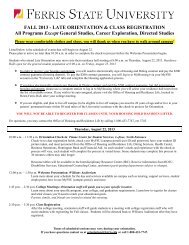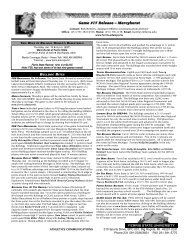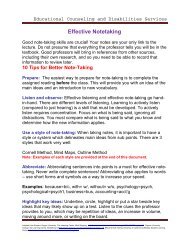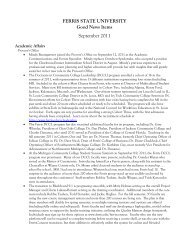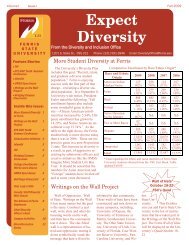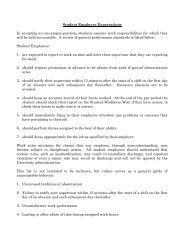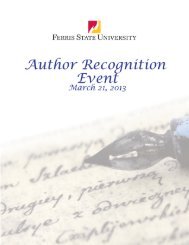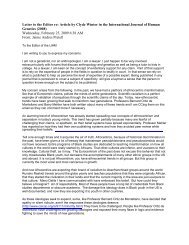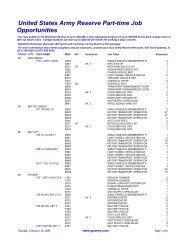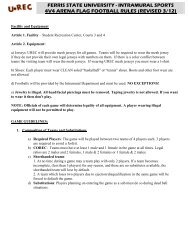Daniel Gasman - Ferris State University
Daniel Gasman - Ferris State University
Daniel Gasman - Ferris State University
Create successful ePaper yourself
Turn your PDF publications into a flip-book with our unique Google optimized e-Paper software.
nature. Both of us,’ (i.e. Wille and Boelsche) Wille emphasized, ‘are idealists in that we attribute to the<br />
totality of nature a psychic spiritual character.’ 59<br />
In the decades after 1892 Monism gravitated towards increasing contact with the theosophical<br />
movement of Rudolf Steiner. The Steiner theosophists, for their part, declared Haeckel to be among the<br />
60<br />
most important thinkers of modern times and enthusiastically embraced The Riddle of the Universe, as a<br />
theosophist bible. Nor did Haeckel himself resist the advances of the theosophists. Haeckel was<br />
introduced to Steiner and maintained a relationship with him over a number of years and one of Steiner’s<br />
major works, Welt-und Lebensanschauungen im neunzehnten Jahrhundert [1900], was dedicated to<br />
Haeckel in recognition of the key importance that Steiner attached to his influence. 61<br />
In a revealing statement about his deep commitment to spirituality, Haeckel once remarked to Rudolf<br />
Steiner: ‘People say that I deny the spirit. I wish they could see how materials shape themselves through<br />
their forces; then they would perceive “spirit” in everything that happens in a retort. Everything there is<br />
62<br />
spirit.’ To be sure, Haeckel for a time distanced himself from Steiner – who, unlike Haeckel, openly<br />
affirmed the mysticism underlying his own Monism, rather than concealing its mystical underpinnings of<br />
Monism beneath the veneer of a materialist vocabulary as Haeckel did. But the affinities and contacts<br />
between the Monist movement and theosophy continued well into the twentieth century. For example,<br />
many Haeckelian Monists continued to collaborate with the theosophists in Germany, as was documented<br />
some years ago in an instructive exhibition that was held in West Berlin on the subject of German culture<br />
in the year 1900. 63 The Haeckelian Monists joined with the followers of Steiner in the Giordano Bruno<br />
Bund, 64<br />
and Steiner, along with the French theosophist Edouard Schuré, logically elevated Haeckel to the<br />
59<br />
Quoted in Gary Stark, Entrepreneurs of Ideology, Chapel Hill: <strong>University</strong> of North Carolina Press, 1981, 263, n.34.<br />
60<br />
See ‘Biographical Notes,’ by Edouard Schuré, in Rudolf Steiner, The Way of Initiation, New York: Maccoy, 1910.<br />
See also, Johannes Hemleben, Rudolf Steiner und Ernst Haeckel, Stuttgart: Verlag Freies Geistesleben, 1965, 165.<br />
61<br />
Rudolf Steiner, Welt-und Lebensanschauungen im neunzehnten Jahrhundert, Berlin: Cronbach, 1900, n.p.<br />
62<br />
Quoted in Rudolf Steiner, The Story of My Life, London: Anthroposophical Publishing Co., 1928, 294.<br />
63<br />
Berlin Um 1900. Ausstellung der Berlinischen Galerie in Verbindung mit der Akademie der Künste zu den Berliner<br />
Festwochen 1984. Akademie der Künste, 9. September bis 28 Oktober 1984, Berlin, 1984, passim.<br />
64<br />
Ibid, 377.<br />
25



